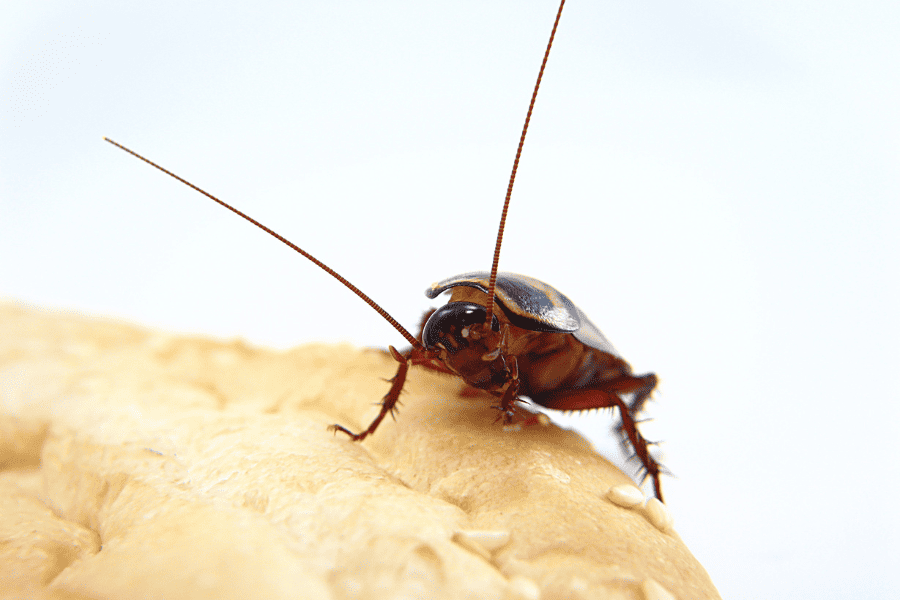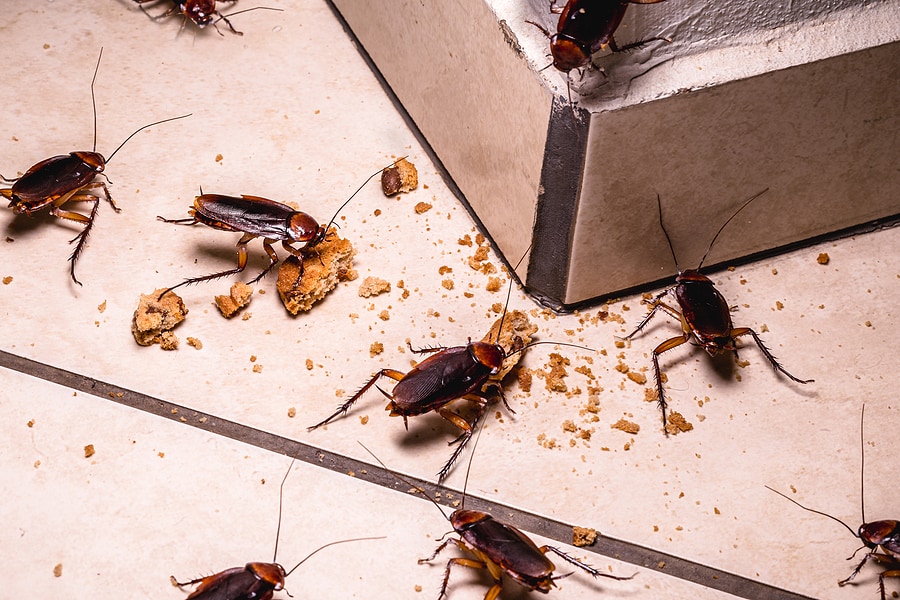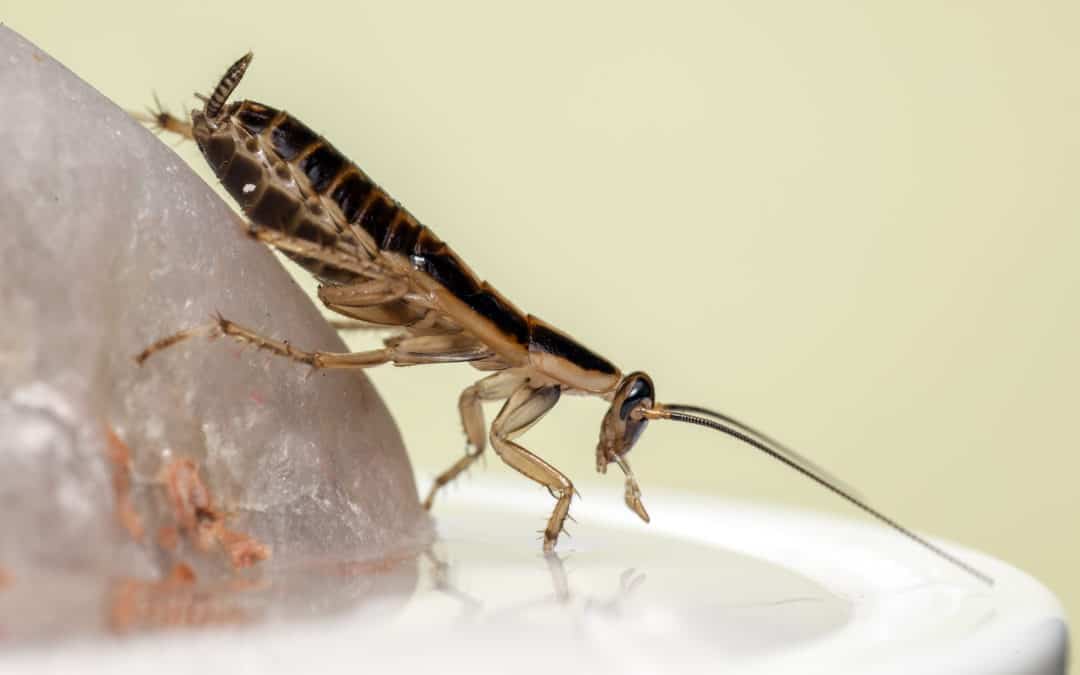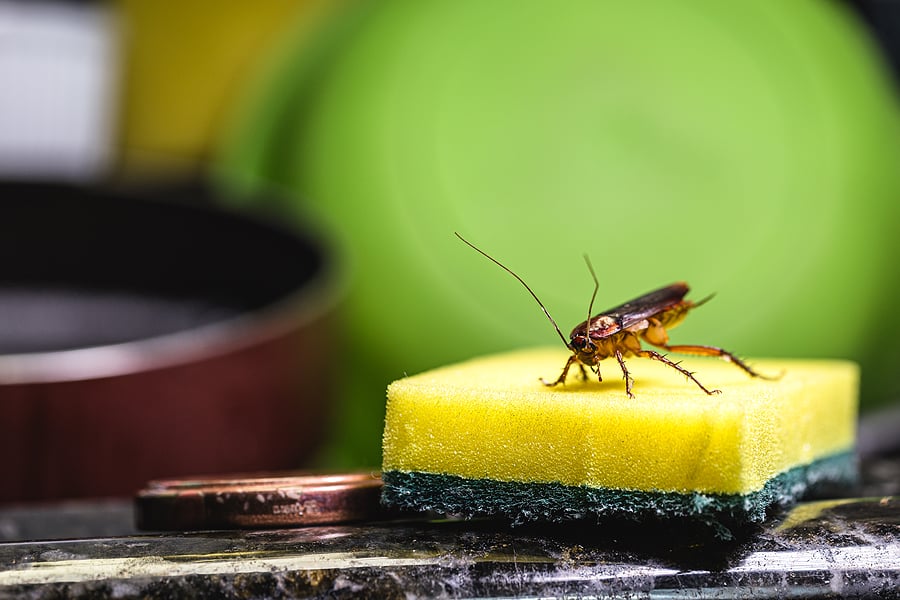READY TO GET STARTED?
REQUEST A FREE ESTIMATE
Fill out the form below or call (888) 466-7849 for a free, no-obligation estimate.

Cockroaches are one of the most common household pests that Florida residents will deal with. While these pests won’t cause structural damage, they can be a health risk to you and your family as they will transmit diseases and contaminate food. Spotting a roach inside your home doesn’t always mean your home is dirty, as roaches can easily get into the cleanest of homes to look for food, water, and shelter. One question homeowners often ask is “How can I stop roaches?” One of the best ways you can prevent them from entering your home is to understand how they can get inside in the first place and familiarize yourself with the cockroach prevention tips that you can utilize.
Roaches can be extremely resourceful when trying to enter homes. These small insects will flatten themselves to be able to crawl through the smallest holes and cracks leading inside a building, including openings around your foundation and utility pipes leading inside the home. Likewise, they will squeeze through any available openings around doors and windows, whether it’s gaps or if it’s been open too long. Roaches are known to hitchhike and lay their eggs on certain items to get inside the home, including luggage, backpacks, used furniture, used appliances, and packages.
One of the best ways you can stop roaches is to create an environment they aren’t attracted to that will deter them away. Check out our common roach preventative tips to consider:
Cockroaches are extremely resilient and once an infestation occurs, they can grow overnight! If you’ve noticed one too many roaches than you are comfortable with, contact a pest control company near you for a free evaluation and the recommended pest control treatment and prevention plan based on your current pest situation.

Spotting a roach inside your home is always alarming! These creatures are known to be resilient and adaptable, surviving in the harshest temperatures and conditions. While we don’t often see temperatures drop too much, we still experience colder weather in Golden Gate, Florida. Your home can provide a warm environment for roaches, food sources, and moisture for survival. We break down three easy preventative measures you can place to avoid a roach infestation below.
The kitchen is a paradise for roaches! These pests will often utilize your dish rack, sink, trash can, and countertops to find a food source. Often, what attracts them to this area are the items left overnight. Leaving dirty dishes and food scraps will attract these pests to various kitchen areas. When dirty dishes are left out, it’s an invitation for roaches to go into the sink, roam on the countertops, and eat food not properly stored. This can all lead to contamination and pose a health threat to your family. Wash your dishes and put them away after each meal. Likewise, check underneath your dining table and cooking area for leftover food crumbs and spills, and clean them up as soon as possible.
Cockroaches will go to great lengths to find food, often raiding your pantries and cabinets if they have a chance. Once they’ve gained access and food is available, they’ll eat and contaminate it. It’s important to properly seal all the food in your home to prevent them from accessing it. Look to store grains, cereals, and sweets in plastic or glass containers with a tightly sealed lid. If you have bags of chips and other snacks, secure them with a chip clip or utilize plastic bags for the leftovers.
Roaches can fit into the smallest hole or opening to get inside a home. A great way to spot any opening from inside is by seeing daylight around a door or window. Don’t forget to inspect the outside of your home for any entry points roaches could enter through, such as the foundation, roof, attic, and crawlspace. If you spot these openings, seal them with caulk, steel wool, or foam, depending on the size of the gap or hole.
If you’ve placed DIY roach preventative measures and you’re still dealing with these pests, it could be time to call in some extra help. Consider contacting your local South Florida pest control company to provide you with a thorough inspection of your home. These professionals will be able to recommend prevention and treatment options customized to your home.

Cockroaches are common household pests that are found worldwide. While they don’t bite or cause structural damage to homes, they can be harmful to your health by contaminating food and other surfaces and triggering allergies and asthma in those affected. Roaches can get into the cleanest of homes in their quest for food, water, and shelter which they need to survive. Once inside, roaches will seek out warmth, moisture, and darkness, often being found in kitchens and bathrooms.
How do they get inside? Roaches have become very resourceful when it comes to getting into places. They can crawl through small holes or cracks in the exterior of buildings, flattening themselves into the smallest spaces. They will also squeeze through openings around doors and windows or sneak through when they’ve been left open too long. They will hitch a ride (or even lay their eggs) on bags, luggage, backpacks, used furniture, used appliances, packages, and even groceries that you bring unknowingly into your home. They can also come in through pipes or other holes in walls (especially shared walls like those in apartments).
If you have the makings of a cockroach infestation, try some of these cockroach prevention tips to help get them under control.
Identify and Prevent Brown Recluse in Your Tennessee Home
6 Signs of Subterranean Termites

German roaches are one of the most common household pests and also one of the most difficult to get rid of. It is important to understand how to identify these cockroaches live and what they are attracted to in order to understand how to get rid of them.
These roaches are light brown to tan in color with 2 black horizontal stripes behind their heads. They are smaller in size (adults usually grow to about 1/2″ in length) and although they have wings, they rarely fly and prefer to run instead. They are most often found indoors, preferring warm humid environments like the ones found in your kitchen or bathroom. They will eat almost anything but prefer crumbs, spills, pet food, book bindings, soap, and toothpaste. German cockroaches are often brought into your home on dry goods, such as bags, boxes, cardboard, used appliances, and furniture.
German roaches are dangerous to humans because they can spread bacteria and contaminate surfaces with salmonella and E. coli. Their feces, cast skins, and saliva can cause allergic reactions which can subsequently trigger asthma.
Common signs of German cockroaches include droppings which are small and black and look like pepper, commonly found in drawers and cabinets and on the tops of doors; egg cases left behind by females; and a mild, musty odor that gets stronger as their populations grow.
These pests are nocturnal and usually only scavenge at night, making it difficult to know you have a cockroach infestation until it is already established. Once inside, German roaches can reproduce quickly, making them very difficult to eradicate. Each female is capable of producing 4 to 6 egg cases per life cycle and can live anywhere from 100 to 200 days.
Because they can be so hard to get rid of, the best way to eliminate German roaches is to prevent them in the first place. Here are some German roach prevention tips you can use in your home.
If you have a problem with roaches or any other pests, contact your local pest control company to properly identify the type of pest you are dealing with and recommend the most appropriate treatment plan going forward.
Are Carpenter Ants Active During the Winter?

Cockroaches are household pests known for spreading bacteria and triggering allergies and asthma. These nocturnal pests come out at night to feed and hide in cracks and crevices during the day. Roaches are attracted to moisture and are most commonly found in bathrooms, kitchens, laundry rooms, basements, and drains. Because they are nocturnal, you may not notice you have a roach problem until a full blown cockroach infestation has set in. Spotting the signs of cockroaches can help you head off an infestation before it gets out of hand. Here are 7 signs you may have cockroaches.
If your neighbors mention having a roach problem, especially if you live in an apartment, condo, or townhouse, the odds are likely that they will make their way over to your home, as well. One way to help prevent this is by getting rid of what attracts roaches in your home. Don’t put open food containers in the trash; don’t leave crumbs on the floor; clean up messes as they happen; keep garbage cans sealed; and try not to store outdoor trash cans near your home.
Roaches are attracted to moisture so they are often found in areas of high moisture in your home. In these areas, they will often produce dark, irregularly-shaped smear marks as they rest or crawl along walls. These smears are often seen on horizontal surfaces and where the wall and floor meet.
Roaches leave droppings behind wherever they are. The size and shape of droppings vary between species. Some species leave behind a small brown stain. German cockroaches leave behind pepper-like specks that can also resemble coffee grounds. The larger American cockroach species leaves behind droppings closer to a grain of rice. The most common places to check for droppings are floor corners, cabinets, under the fridge, and under the stove. It is important to clean any droppings up when you find them as they are known to spread bacteria.
Egg casings are long, hollow, light brown tubes that hold cockroach eggs, anywhere from 20 to 50 at a time. Although most species leave egg casings behind once the eggs are laid, some species actually carry them with them until their offspring hatch. Egg casings are usually found at the base of the refrigerator, in cabinets that store food, and near leaky pipes. If you find a casing that still has eggs in it, dispose of it by flushing it down the toilet.
Roaches and their feces give off a musky, unpleasant odor. While one roach usually doesn’t emit a strong enough odor to be detected by humans, when larger numbers of roaches get together the smell gets stronger and more easily detected. While the smell is usually associated with live roaches, dead cockroaches can also emit the odor as part of the decomposition process.
The feces and exoskeleton of cockroaches contain proteins that can trigger allergies and asthma. If you don’t usually have allergies and have symptoms appear without a known trigger; or your current allergy and asthma symptoms seem to get worse without a known trigger this may indicate the presence of cockroaches in your home. Symptoms include stuffy nose, wheezing, red itching eyes, shortness of breath, chest tightness, and the increased use of your inhaler.
If you see one roach, the odds are likely that there are many others present. Roaches are nocturnal and usually spotted at night. If you are seeing roaches during the day, overcrowding from an infestation may be forcing them out in the open.
The best way to avoid a roach infestation is to prevent them in the first place. Prevent cockroaches by:
If you have a problem with roaches or any other pest, contact your local pest control company for a free analysis and comprehensive treatment plan.
Bed Bugs: Where Do They Come From?
How to Prevent Little Black Ants